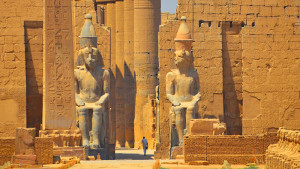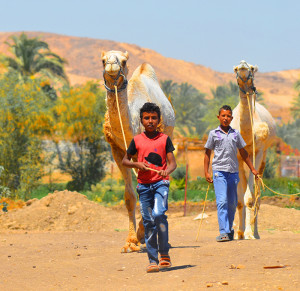The final chapter
Egypt
The country of the Pharaohs was one of the most difficult to enter and exit. We arrived by ferry from Aqaba in Jordan to Nuweiba in the Sinai Peninsula.
The country of the Pharaohs was one of the most difficult to enter and exit. We arrived by ferry from Aqaba in Jordan to Nuweiba in the Sinai Peninsula.
To get the authorisation to cross Sinai and Suez with a 4 wheel drive vehicle is a challenge, but even with the approval in place, you can still find yourself stuck in the port for few hours due to paperwork issues. Once we entered Egypt, we drove to the most southern part of Sinai to discover what some people describe as the ‘jewel’ of Egypt, Sharm El Sheikh. What we discovered was a deserted town that was not ideal for travelers such as us, who needed an open, secure place to deploy our equipment. Unfortunately there was no such place like this in Sharm El Sheikh and this was something that repeated itself throughout our journey in Egypt.
We spent a couple of days in Sinai before crossing the Suez Canal to reach Cairo and fix the issue with our ‘Carnet De Passage’ that we had at the border. After obtaining all the necessary documents to be able to exit Egypt without any problems, we hit the road again and drove North East to the Mediterranean Sea at Port Said, following the coast to Alexandria; the city of Alexander the Great where some historic places remain, such as the Qaitbay Citadel.
After this loop in the Northern part of Lower Egypt, turning around the large estuary of the Nile, we drove straight to Giza, south of Cairo, to discover the Pyramids. As the main attraction of Egypt, which everybody wants to see when visiting the country, we expected a site full of people, but there were no more than a hundred. We had the Pyramids more or less to ourselves, but locals working with tourists were rather pushy, all fighting to get the few tourists who were present, meaning that our visit was not particularly peaceful or enjoyable.
After this experience we decided to drive south towards our next destination; Sudan. It was the first time on our trip that we had wanted to leave a country so quickly. From Giza we drove East to follow the Red Sea down the coast. After passing places such as Hurghada, we turned West to follow the Nile to the border with Sudan.
On the way we stopped at the famous city of Luxor, where there is plenty of sightseeing to be done, such as the temples of Karnack and Luxor. The Valley of the Kings and the Valley of the Queens were impressive and beautiful. After that we drove a couple of kilometers south to reach Aswan, where we applied for our visas to visit Sudan, which took five days. During that time we found a nice spot beside the Nile to stop and make some maintenance on our vehicle. Here we met some Nubians who came to enjoy the shadows of the mango trees and swim in the cool waters of the Nile. We took time to observe nature and do some bird watching. On the river we saw some Feluccas, the traditional Egyptian boats, and a huge tourist boat going up and down the river, unfortunately with not many people on it.
Egypt is definitely not a country for travelers like us, but for those who want to discover the historic sites at a low rate, it’s the right time as all accommodations need tourists, and so have adjusted their prices accordingly.
Exiting Egypt with our vehicle took a while, but we knew from previous travelers that this border is one of the most difficult in Africa. We spent all day between Egypt and Sudan carrying out the customs, police and immigration process. But now, we’re on our way to Sudan. Thanks for sharing in our journey through the Middle East!
The Trastours are a family that have been overlanding the planet for as long as they can remember! Made up of Greg and Magali as well as their daughters Natasha and Anastasia, The Trastours are a family filled to the brim with an unstoppable sense of adventure for the ultimate goal – to explore the world. You can check out their next stop at www.nomadsroad.com or look for Nomads Road on Facebook and Twitter.
Words + Photos by: Grég Trastour



